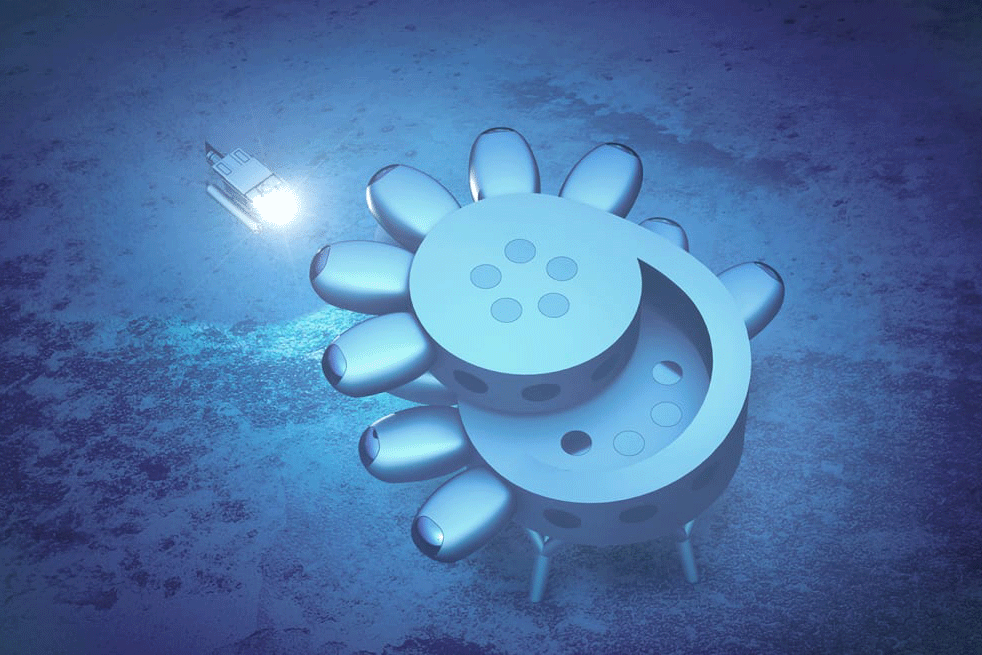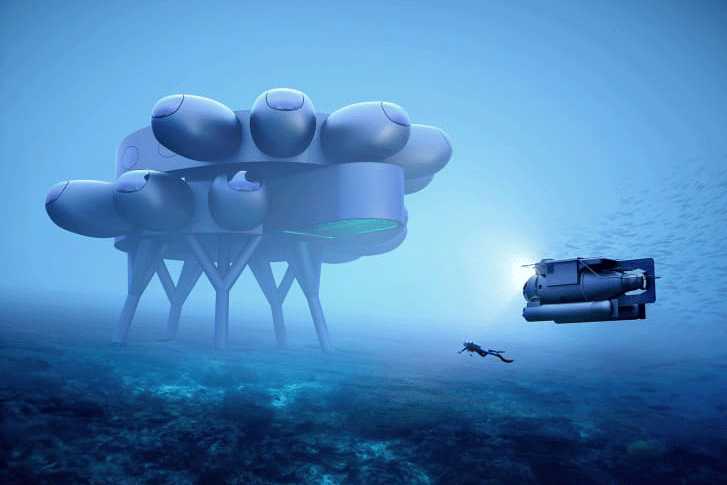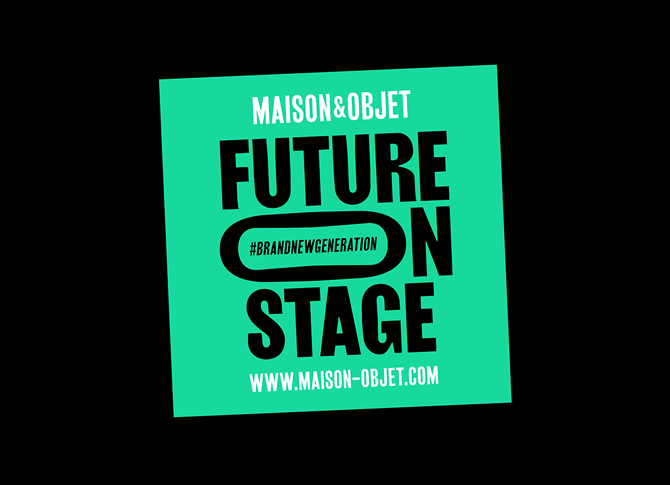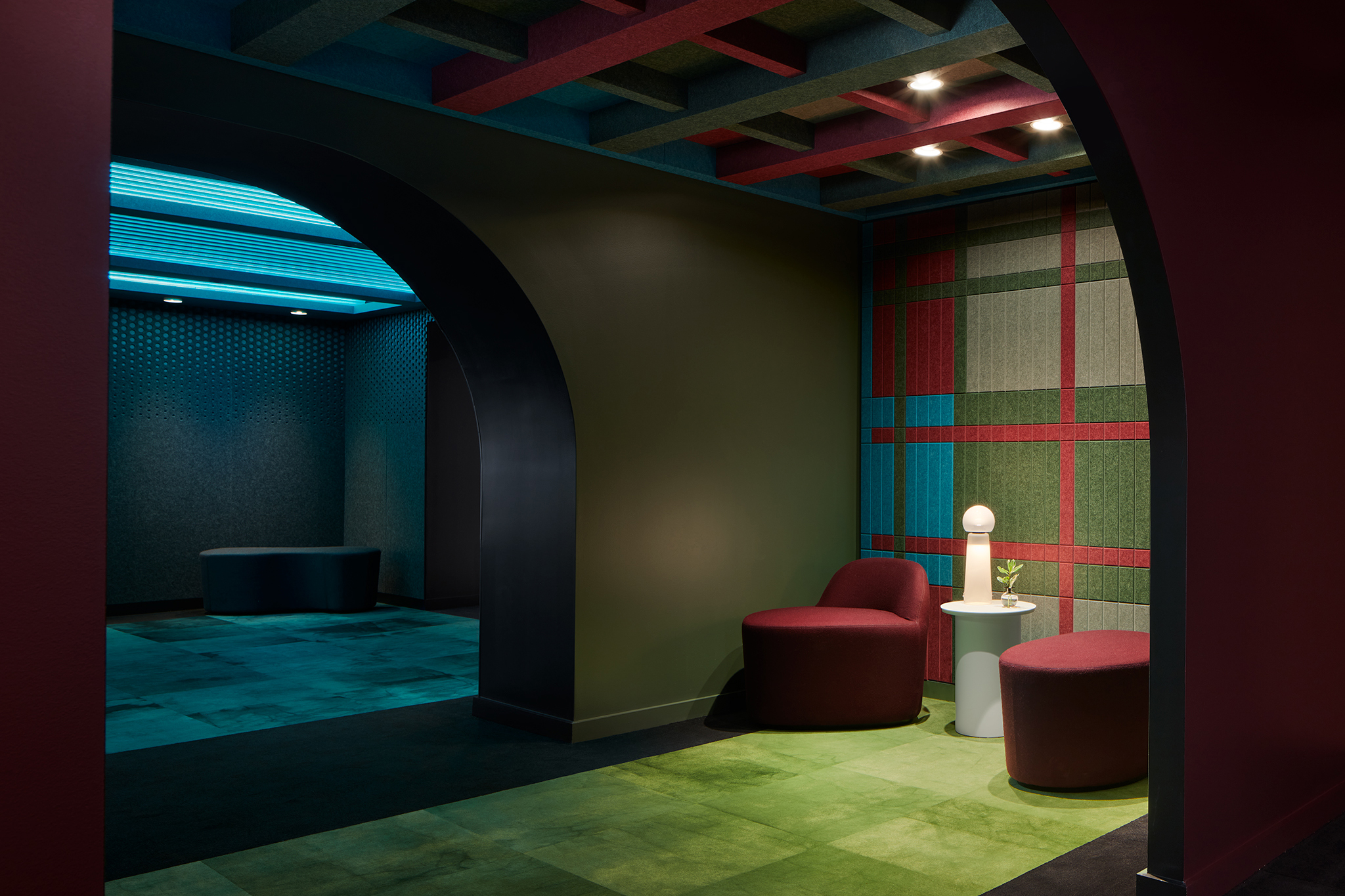Astronauts have the International Space Station, and soon marine researchers will have PROTEUS™, an underwater research station and habitat designed by Yves Béhar and Fuseproject.
Developed in partnership with the Fabien Cousteau Ocean Learning Center, the 4,000 square feet lab will live 60 feet under the water off the coast of Curaçao, providing space for researchers and scientists to study the ocean up close, from the effects of climate change to marine life and medicinal discoveries.
Designed as a two-level spiral structure, modular pods that make up laboratories, personal quarters, a moon pool, and more connect to the main hub, which is attached to the ocean floor by stilts. If the structure looks like a scene from a science fiction movie, that was intentional—Yves deliberately chose a retrofuturist design for PROTEUS to align with how many traditionally imagine underwater living.
PROTEUS can house up to 12 people at a time and will also include the first underwater greenhouse for growing food, allowing residents to stay underwater longer despite the cooking restraints of a pressurized environment—namely, no open flames.
- PROTEUS was conceived as the underwater version of the International Space Station. Photo courtesy of Fuseproject
For those who will eventually live and work in PROTEUS, being underwater for an extended period of time means limited access to natural light and increased bouts of social isolation. To combat those issues, the structure will be designed to gather as much light as possible from windows, and common spaces will place a larger emphasis on comfort and social interaction—something most underwater stations tend to forgo for utility purposes.
Sustainably powered by wind and solar energy and ocean thermal energy conversion, PROTEUS will take about three years to build, though the coronavirus has already caused some delays. Either way, once complete, the underwater habitat is sure to change oceanic exploration as we know it.





